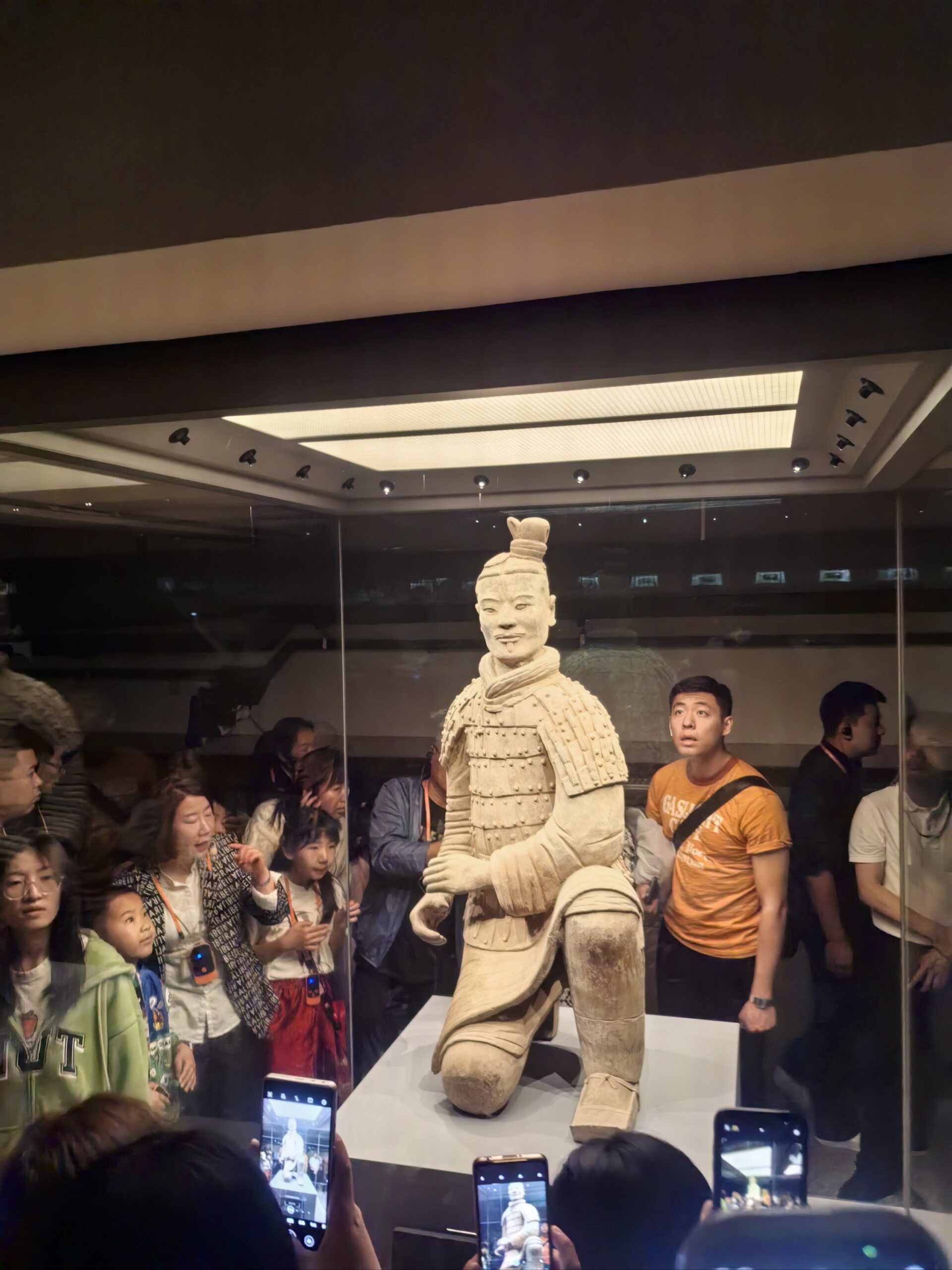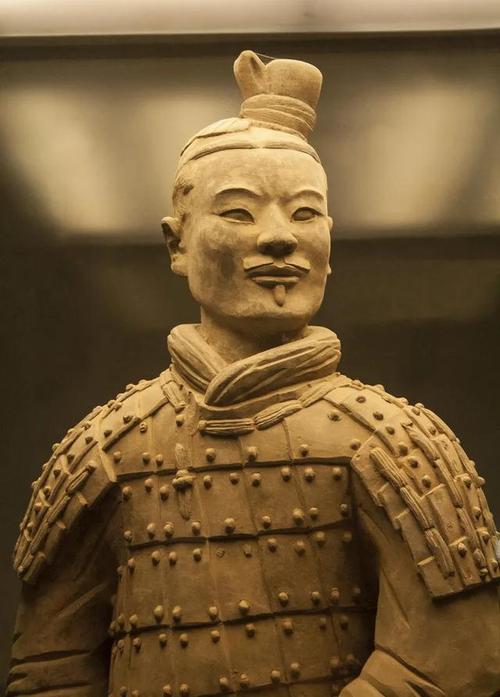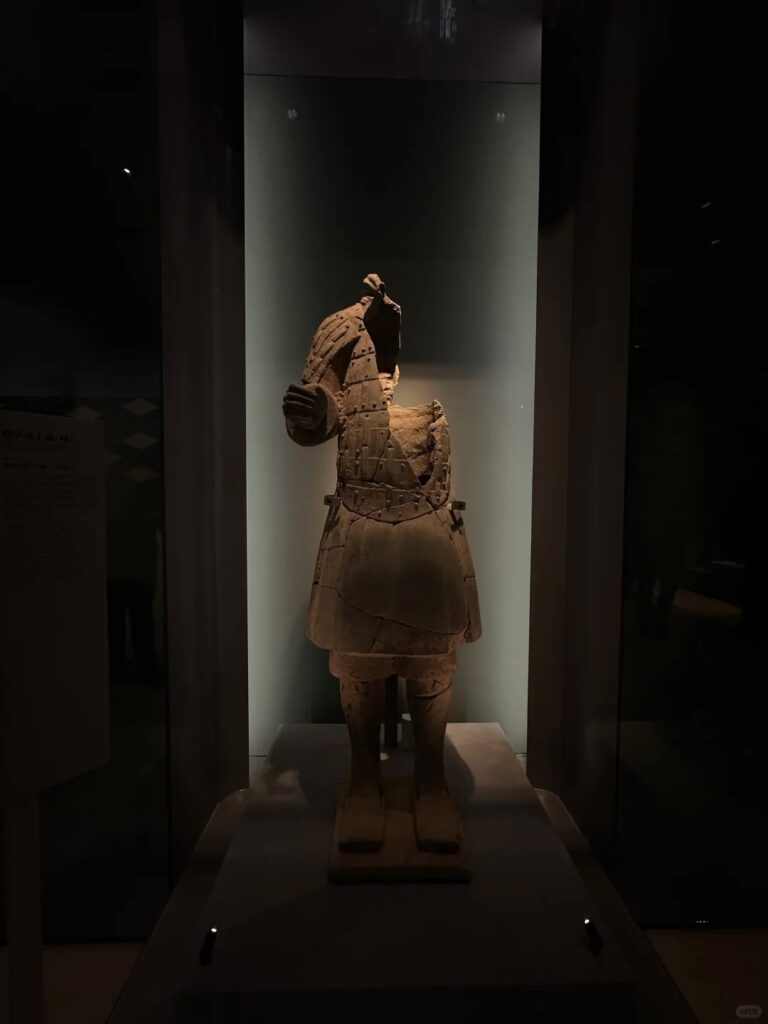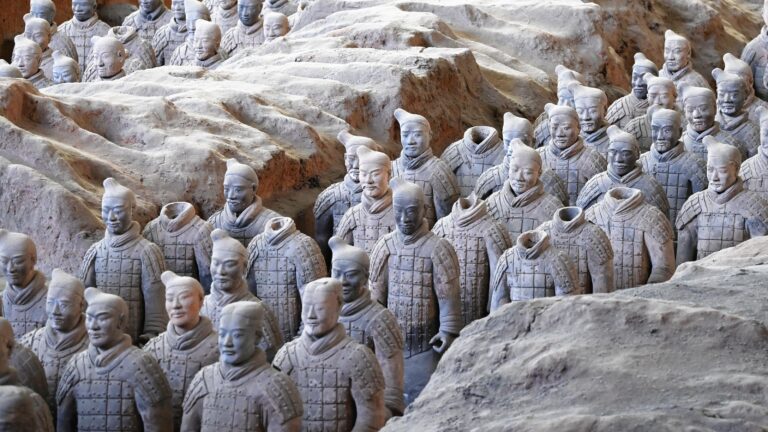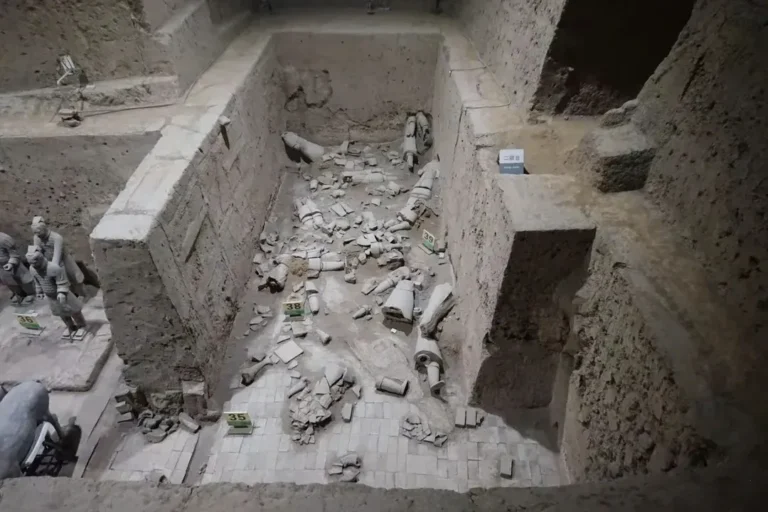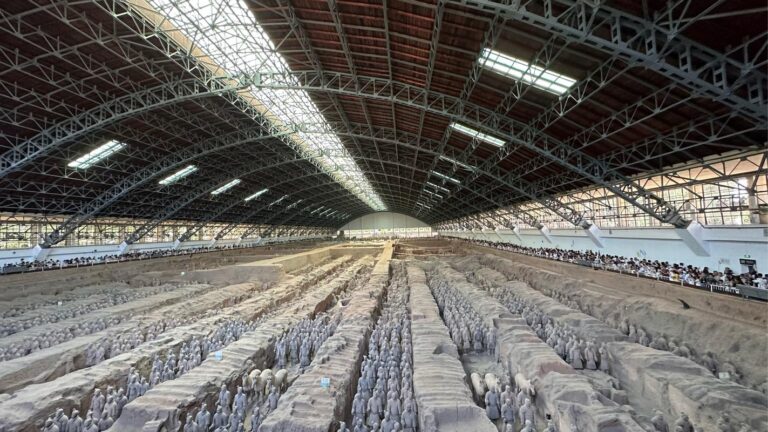What is the mystery of the terracotta warriors?
Sleeping for thousands of years of unsolved mysteries: the Terracotta Warriors six amazing puzzles
First, why did the mysterious army suddenly appear?
In 1974, a Shaanxi farmer, Yang Zhifa, dug up a world-shattering secret with one hoe – thousands of life-size, heavily armed terracotta soldiers resurfaced after 2,200 years of underground slumber. The scene resembles the movie plot of Raiders of the Lost Ark, but what’s even more confusing is this:** Why did China’s first emperor, Qin Shi Huang, spend 38 years secretly burying such an army that would never decay?
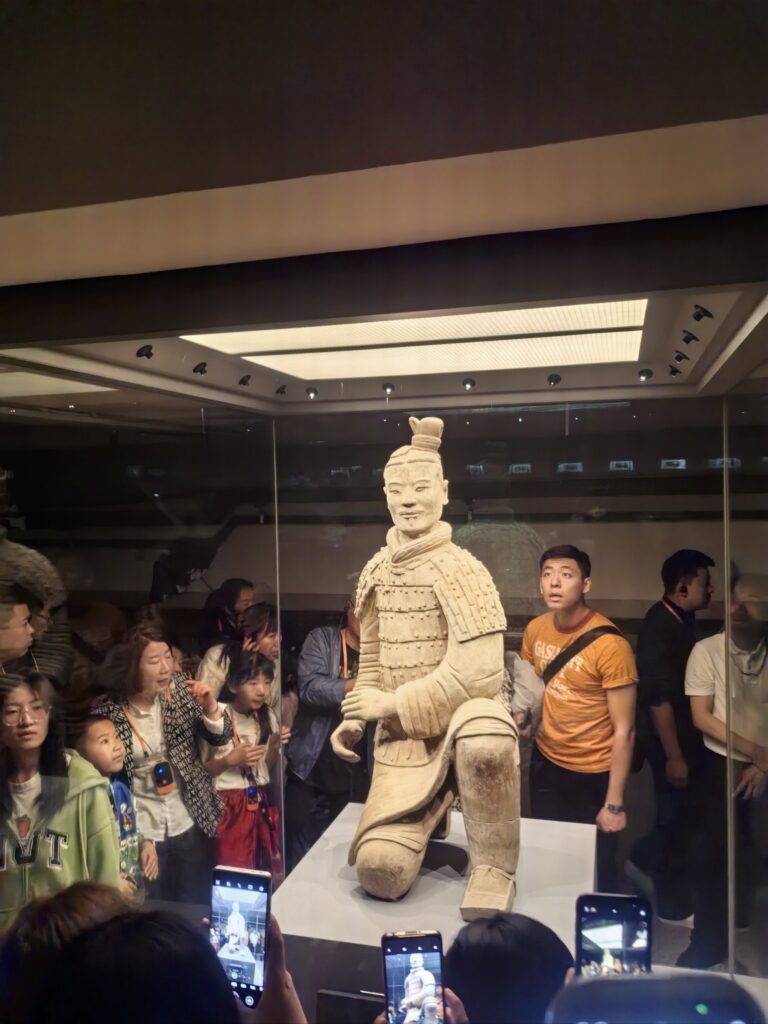
Archaeologists found that the placement of these terracotta figurines is a hidden mystery: the 6,000 soldiers in Pit 1 face east, which is the direction of Qin Shi Huang’s conquest to unify the six kingdoms; the chariots in Pit 2 form an ancient version of the “Blitzkrieg” formation; and the commanders in Pit 3 hold unopened bronze swords in their hands as if waiting for a never-ending command. These details let National Geographic marvel: “This is not a simple burial object, but a complete universe created by an emperor for eternal life.”
Second, how are a thousand faces realized?
When you take a closer look in front of the Terracotta Warriors, you will be shocked to find that:** More than 8,000 terracotta warriors surprisingly do not have duplicate faces! ** From the single-eyed Guanzhong Hanzi to the bearded Western warriors, and even suspected Mediterranean race of high nose and deep eyes, this army is like an ancient version of the “United Nations peacekeeping forces”.
Modern 3D scanning technology has revealed some of the secrets:
- Craftsmen use modular production: heads, torsos, and limbs are made separately and assembled like Legos.
- More than 200 templates for facial features, which are arranged and combined to create a “thousand faces”.
- The way the buns are woven hides a code of military rank: ordinary soldiers wear round buns, cavalrymen wear flat buns, and generals wear crossbills.
But the most puzzling thing is how these craftsmen, who lived in the 3rd century BC, could make the proportions of each terracotta figurine perfectly match the golden ratio of “three courts and five eyes” without modern measuring tools. This is a mystery that sculptors still marvel at.
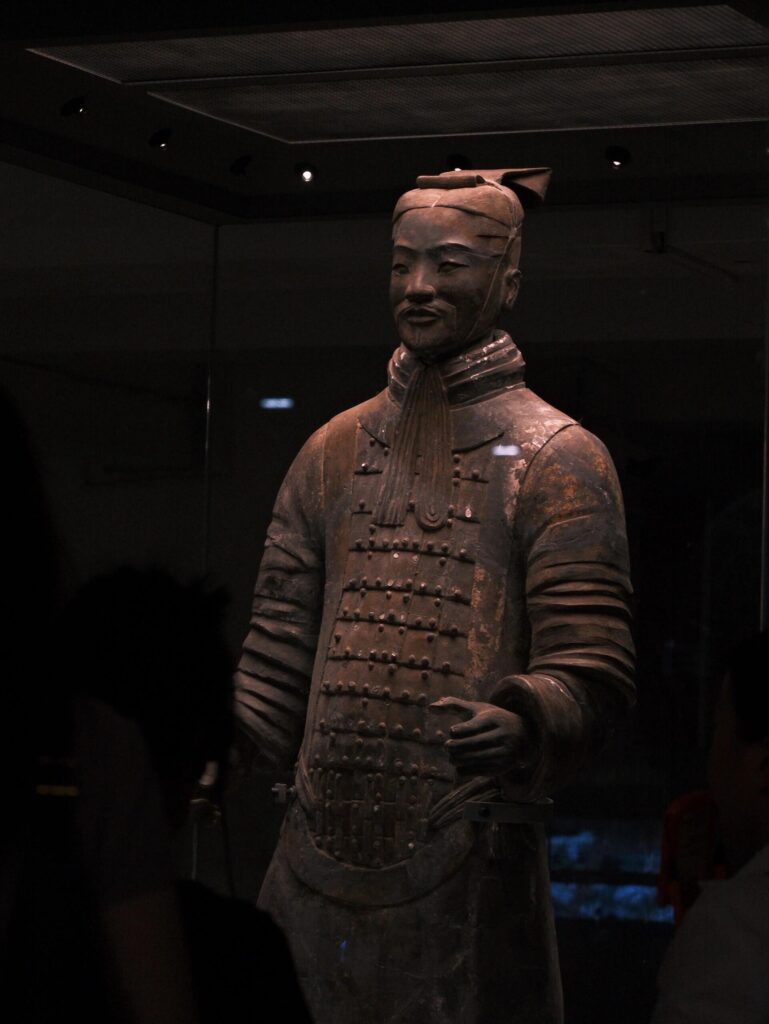
Third, the color disappearance of the “15-minute magic spell”
Little-known is that the terracotta warriors excavated was a colorful “rainbow army” — purple robes, blue armor, red tapestries, and even eyelashes with a comb to press out fine lines. But the stunning colors only lasted 15 minutes: when exposed to air, the pigment layers fell off like melted ice cream, eventually turning into the grayish-yellow color we see today.
It took twenty years for scientists to break the “color fading spell”:
- Lacquer killer: Terracotta figurines are painted with tree lacquer (natural glue) before coloring, and the drying environment will cause the lacquer layer to curl and flake off.
- Mineral Mutiny: The unique “Chinese Purple” pigment (copper barium silicate) of the Qin Dynasty immediately oxidizes and changes color when it encounters oxygen.
- Microbial Carnival: Dormant bacteria in the ground eat the pigment layer madly after encountering the air.
Today, archaeologists have invented the “liquid glass” spraying technology, which can lock 95% of the color in the moment of excavation. This patented technology is actually from the preservation of the doughnut frosting method to get inspiration!
Fourth, 2000 years ahead of the “black technology”
Bronze weapons found in an array of terracotta figurines hold an even more amazing secret:
Chromium salt antirust: 0.01mm chromium oxide layer on the surface of the sword, allowing the weapon to remain rust-free for 2,200 years (Germany mastered this technology only in 1937)
Standardized production: the error of 40,000 arrowheads is less than 0.02 mm, comparable to modern bullet manufacturing
Modularized design: crossbow parts are engraved with craftsman’s number, and damaged parts can be quickly replaced (2100 years before the Ford assembly line)
The most amazing is the bronze sword’s metal memory function: was bent 45 degrees of the sword body, in the removal of heavy objects can automatically restore straight. U.S. materials scientists with an electron microscope found that the body of the sword is covered with nanometer lattice structure – this technology has not been applied to aerospace materials until the 20th century.
Fifth, the depths of the Palace of the unsolved mystery
Through remote sensing, scientists found that the terracotta warriors and horses is only the “tip of the iceberg” of the mausoleum of Qin Shi Huang:
- Mercury content above the main dungeon exceeded the standard 280 times, confirming the “Historical Records” in the “mercury for the hundreds of rivers and seas” record
- The dungeon contains a large number of unexcavated burial pits, which are suspected to contain a palace complex, a zoo and even a man-made starry night sky.
- Thermal imagery shows abnormal temperatures in some areas, suggesting the presence of functioning mechanical devices.
But most disturbing of all is the warning in the Records of the Grand Historian: “When the First Emperor first came to the throne, he wore a ruler, Mount Li,… Using mermaid paste as a candle, the degree does not go out for a long time.” — Are the lamps in the underground palace still burning? Are those flowing rivers of mercury guarding the emperor’s remains? Modern technology allows us for the first time to have the key to unlock these puzzles, but archaeologists are still arguing: ** Should we open this “Eastern Pandora’s Box”?
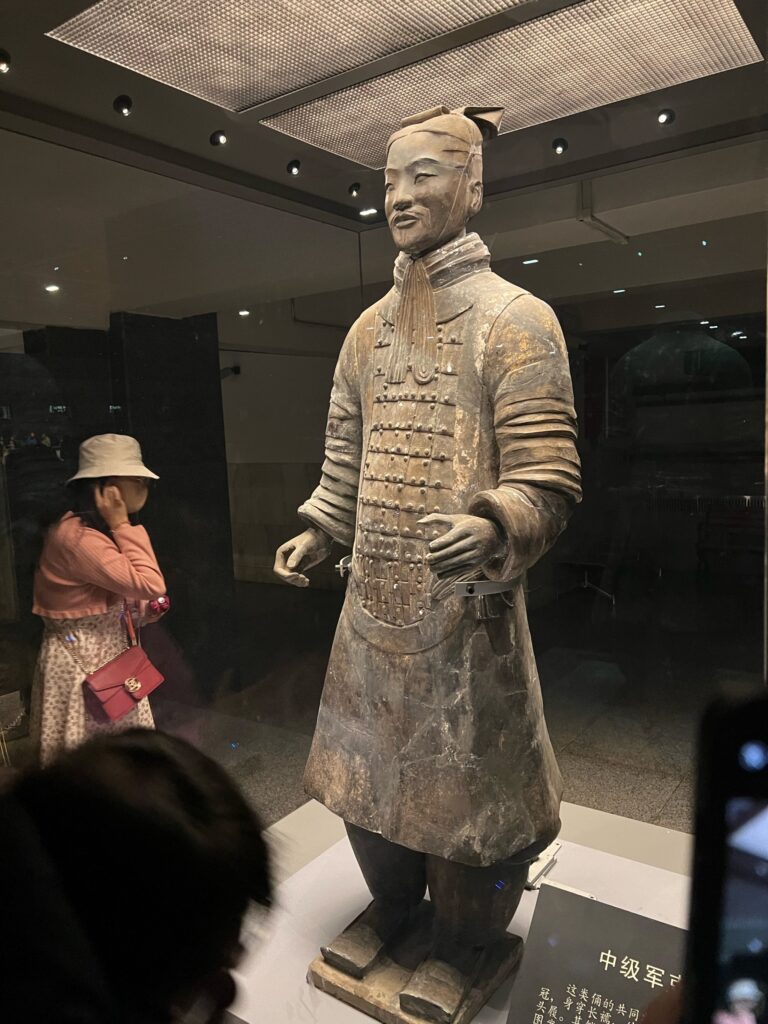
Sixth, never fade civilization code
Terracotta Warriors puzzles are fascinating because they are linked to the common curiosity of mankind:
Engineering Miracle: a super project built by 700,000 laborers in 38 years (equivalent to mobilizing the total number of active U.S. troops)
Artistic Revolution: Realist sculpture predates Europe by 1800 years, but the technique was lost with the fall of the Qin Dynasty.
Dialogue of Civilizations: Western faces in terracotta figurines confirm that there was already a mix of cultures along the Silk Road long before Zhang Qian passed through the Western Regions
Today, these puzzles are still creating new legends: NASA studied the painted pigments of terracotta figurines to improve the coating of the Mars rover; Hollywood used 3D scanning technology to replicate terracotta figurines for The Mummy 3; and even some programmers restored the original colors of the Terracotta Warriors using AI…
As you gaze at these terracotta soldiers in the pavilion in Xi’an, remember: each faded terracotta figurine is a three-dimensional history book waiting to be deciphered. They remind us – some puzzles are beautiful precisely because the answers are always more amazing than imagined.

